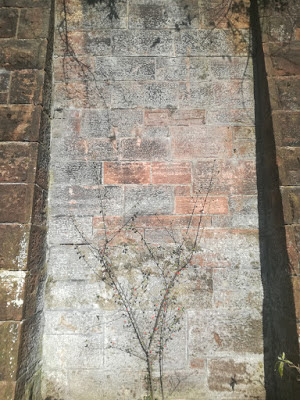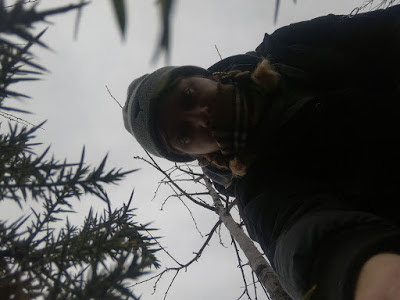Hello
 |
| Bush with currants, High Street, Glasgow, 2020 |
I have been sat fiddling with the above image for about 15 minutes, trying to align this text next to it in order to create an aesthetic of embedded image-with-text. It seems this platform does not allow for that, therefore the image above (and subsequent others) may seem a little disjointed, or disembodied, from the text. An image of a bush with currants towers over this paragraph, and perhaps that is apt. Perhaps this paragraph is acting as a grounding, a base-level, a substrate or multilayered support for the image. Perhaps it is apt that this blog will take the form of slabs of sedimented text holding up toppling images of soil, moss, fungi, half-buildings and edgelands.
Please excuse my pre-amble.
Welcome to an online residency held by Salt Space Cooperative, a brilliant, artist-led gallery/studio/work space setup by students and graduates from the Glasgow School of Art. The cooperative seeks to allow encounters between creative researchers to flourish and supports community resilience, which I believe are two of the main reasons why I got in touch in order to do this residency.
My name is India and I live in Glasgow, UK. I don't particularly enjoy writing bios or about me’s, so I am going to take this opportunity to welcome you through introducing my research.
I began using an ongoing creative research practice to delve into a city’s composition. The notion of studying geological and ecological life within city limits spanned from a silent walking workshop held in November by MUCK (Must Use Critical Knowledge), which I co-edit, and The Nature Library. We invited workshop goers to explore a derelict landscape in to the north of Glasgow City Centre through silence and presence. This workshop then lead to excavations of the East End of Glasgow, specifically High Street.
It just so happens that Salt Space Coop held an open call for a residency to be held within their co-working space on High Street. It seemed ideal to physically position myself on the street in order to create site specific forays into the history and current state of High Street and the surrounding area.
 |
| What the soil sees, Dalmarnock, 2020 |
Although I am now writing this from Partick in the West End of the city, (due to unforeseen circumstances that I know you know about), I seem to have gathered enough scraps, snippets, notes and alder cones to explore the High Street through the medium of a blog and invite you to read a rhizomic historicising regarding that area of land and the concept that more-than-human-others (such as microbial beings) are often ignored yet living archives that are imbued within both urban and rural landscapes. I am interested as to why these stories don't tend to enter urban development practices and concepts of place-making and I will be asking these questions by ushering them to the forefront of this particular account of High Street.
Thank you for finding your way here and I hope you can join me over the next few weeks as I feel my way along the knots of site-as-memory, leaky sites, sites who educate and sites that got left behind.
*If you would like to read more about how we are approaching our postponed exhibition project, click here
 |
| Common Inkcap, High Street, October 2019 |


Comments
Post a Comment